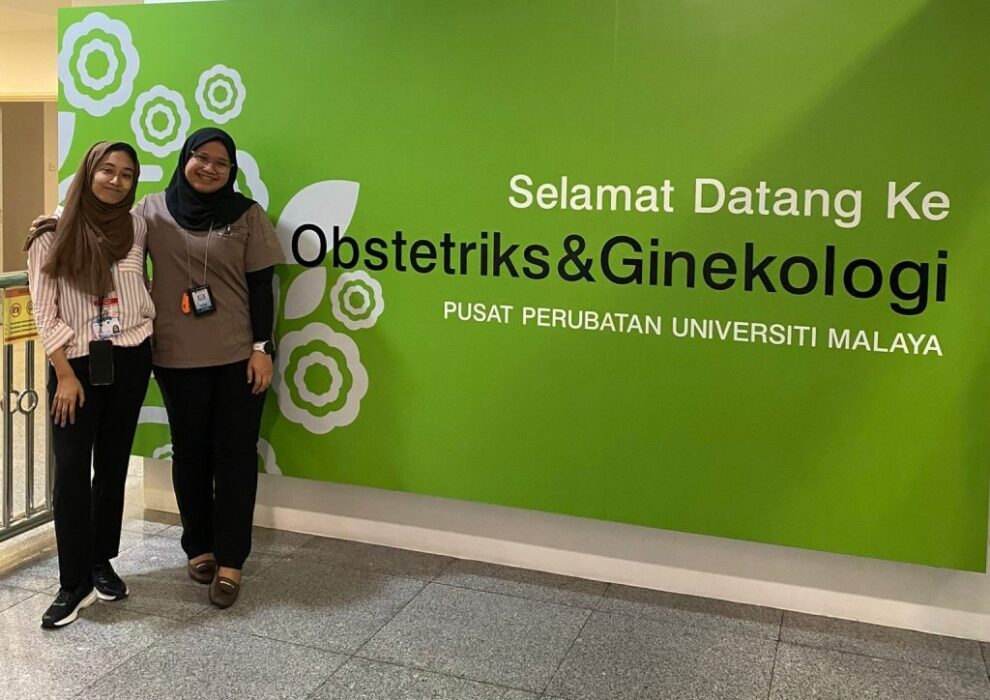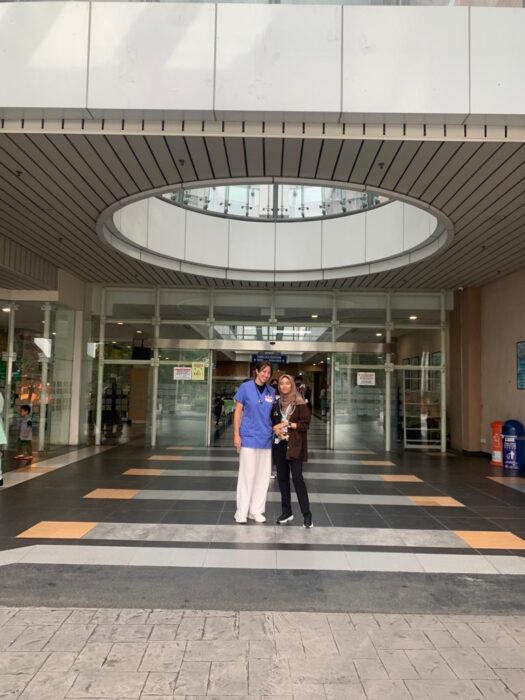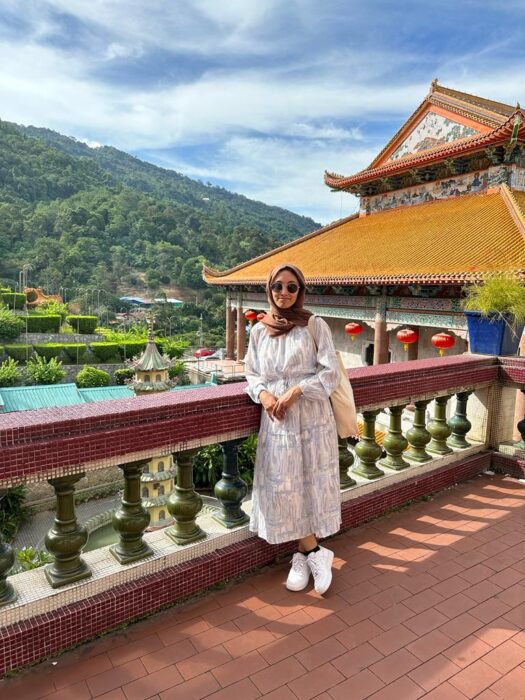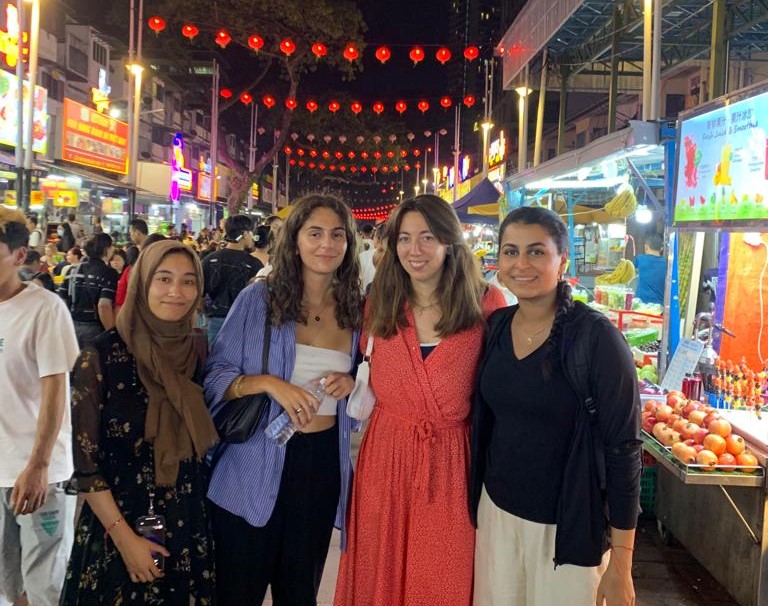By Amina Ali
Fifth-year medical student Amina Ali recently completed her medical elective at the Paediatrics Department at Homerton Hospital in London, and the Obstetrics and Gynaecology department at the Universiti Malaya Faculty of Medicine in Kuala Lumpur. Medical electives are seven-week placements that give students the opportunity to gain broader self-directed clinical experience in a different cultural and social environment, and within a different healthcare system.
Amina’s placement was funded by Thriplow Charitable Trust with support from CGHP. Here she explains more about the experience.
What was unique about your elective?
It allowed me to work and learn in a clinical setting away from my home institution of Cambridge. I was able to apply the knowledge I had gained in medical school to a diverse patient population within a different clinical environment and medical system. It also provided me with the opportunity to connect with medical professionals and students both in London as well as in Asia, building on my professional network. I was also able to build on my brief experience of Paediatrics and Obstetrics and Gynaecology during Year Five. It was a chance to grow professionally and personally and improve my cultural awareness.

Amina (left) at the Obstetrics and Gynaecology department at the Universiti Malaya Faculty of Medicine in Kuala Lumpur.
What did you do during the placement?
In the UK I was based in the Paediatrics Department of Homerton Hospital under the supervisor of Dr Hannah Caller. During my time with this team, I participated in activities that allowed me to build on my understanding of paediatrics, including:
- Taking an active role in ward rounds, including clerking and reviewing patient charts.
- Assisting with common paediatric procedures such as venepuncture.
- Spending time in neonatal intensive care units to learn about the specialised care provided to newborns.
- Attending specialty clinics such as paediatric cardiology, allergy and dermatology clinics.
- Participating in paediatric simulations and communication exercises.
- Attending speciality teaching and improvement sessions.
The Malaysia component of my elective took place in the Obstetrics and Gynaecology department of Universiti Malaya Hospital under the supervision of Associate Professor Nuguelis Razali. During my time with this team, I participated in a variety of activities that helped me to deepen my understanding of Obstetrics and Gynaecology care in Malaysia, including:
- Shadowing healthcare professionals and working closely with local students during patient consultations and surgeries.
- Observing and participating in antenatal and gynaecology care clinics.
- Working closely with the labour team in the management of women in labour.
What skills and knowledge were you able to use or share?
The healthcare system in Malaysia has been adapted from the UK healthcare system, however while I was there, I noticed some key differences in the approach to women’s health. For instance, I was intrigued to learn patients who are informed about contraceptive methods postnatally are given the injectable contraceptive medroxyprogesterone immediately after birth, even when intending to breastfeed. I was able to share that in the UK the injection is usually given six weeks post-birth if breastfeeding. The manufacturers advise that in women who are breast-feeding, the first dose should be delayed until six weeks after birth, although evidence suggests no harmful effects to the infant if given earlier.


What differences did you observe between the Malaysian and UK hospital systems?
Malaysia has a two-tier healthcare system consisting of public and private sectors, and the hospital I worked in consisted of both services. In the UK however, I have worked in publicly funded NHS hospitals.The approach to healthcare also appeared to be less patient centred in the hospital in Malaysia in comparison to NHS hospitals.I also noticed thatobstetrics patients are encouraged to be induced into labour when at 38 weeks in Malaysia.
“Thank you for providing financial support for my placement. It was a truly unique experience and the skills I have gained will be carried throughout my medical career.”
What was a highlight of your placement?
For me, a big success was being able to integrate into the O&G team at Universiti Malaya Hospital and build my network of international healthcare professionals. It was also interesting to witness the similarities and differences in the provision of O&G care between the UK and Malaysia, and to have the chance to improve my cross-cultural understanding of Malaysia.
What were some of the challenges?
As an external student, it was a challenge to gain the trust of patients, as well as dealing with the language barrier when ward rounds or consultations were conducted in Malay. In some settings, like surgery, it could be hard to get hands-on experience.
What’s next?
As I enter my final year of medical placement, my next steps include writing up an elective report and reflecting on the clinical cases I encountered during my elective placement.
In the future, it will be useful to pair Cambridge University medical students with Unversiti Malaya medical students, so that we can collaborate on research and share best practices for medical education and clinical work.

Amina’s trip was made possible by funding from the Thriplow Charitable Trust.
Return to blogs

